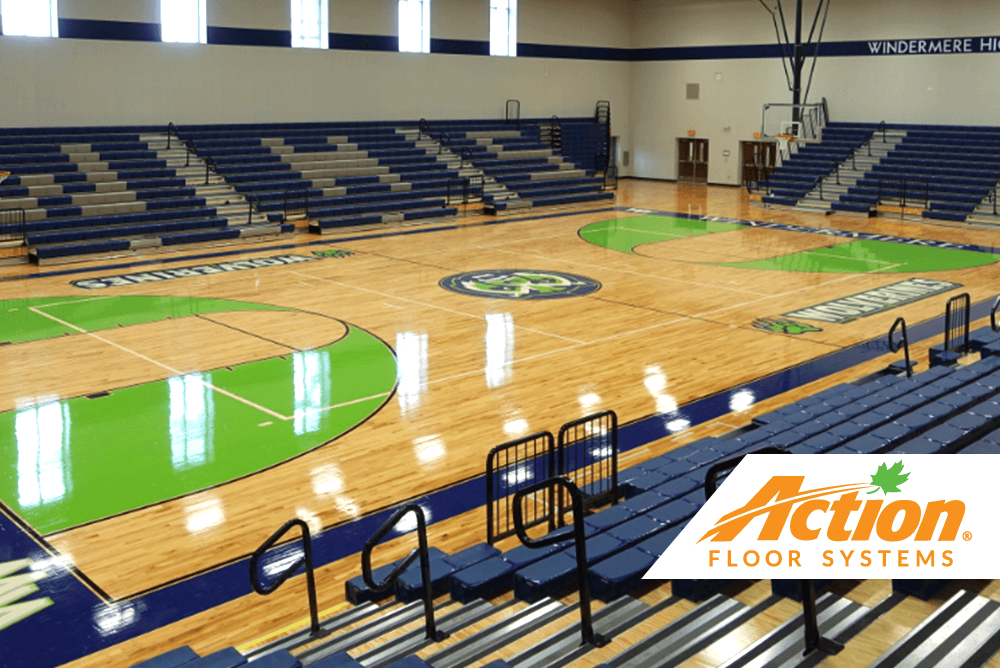
The team at Action Floor Systems® considers a completed sports floor installation a display of pure craftsmanship. And, when one of our skilled dealers finishes a new gym floor, adding game lines and center-court graphics, it’s practically a work of art.
It all starts with northern hardwood maple that’s harvested 30-degrees north of the equator. Action Floors’ mill in Mercer, Wisconsin, happens to be located in the perfect place to access lumber, which is sustainably harvested from maple forests in the Northwoods.
The lumber goes through the milling process, transforming into floorboards that will eventually become part of one of our maple sports floor systems. However, each one of those boards is unique, which is one reason why the Maple Flooring Manufacturer’s Association (MFMA) developed rules that define different grades of maple.
Maple Sports Floor Aesthetics vs. Performance
While the MFMA follows detailed performance standards for sports flooring, the grade of maple you choose to install in your facility will not impact how the floor responds to athletic activities. Instead, grades of maple pertain to the appearance of the wood.
Hardwood maple is a natural product. So, it comes with natural color variations and markings, such as knots, burls, and streaks left behind by the bark. The MFMA refers to these marking as “defects.” However, the appearance of such variations by no means indicates the board itself is necessarily defective.
The amount of color variation and defects on the face of the wood is essentially what determines whether it is first grade, second grade, or third grade maple flooring.
In the end, the choice is usually left up to architects and facility owners as they make design decisions. It all depends on whether you’d prefer a brighter sports floor or one with more natural markings.
Let’s take a closer look at the factors that separate grades of maple:
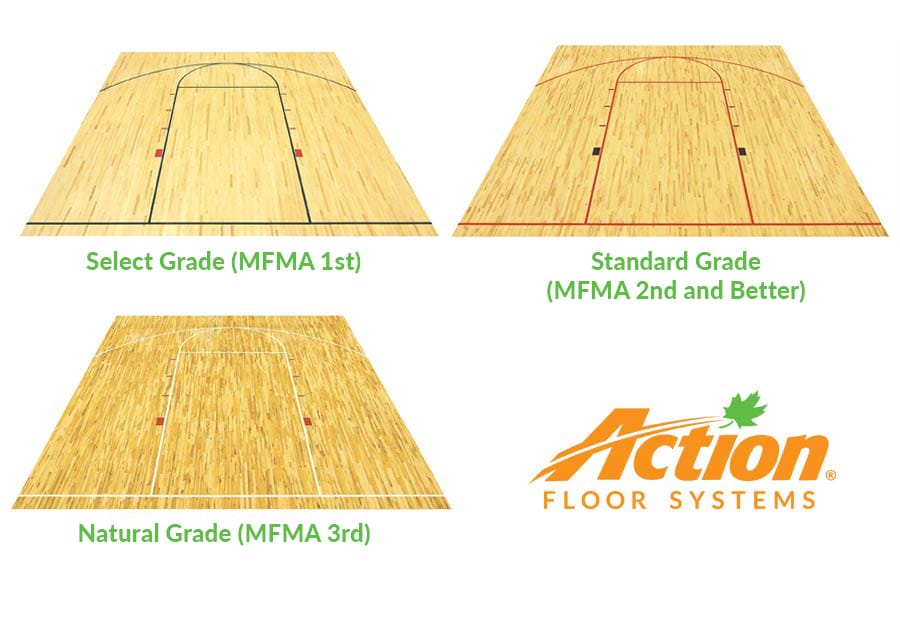
Natural Grade (MFMA Third) Maple Sports Flooring
The MFMA explains that third grade maple will have more natural variations than other grades. This ultimately results in a darker-looking finished product.
While third grade maple is allowed to have all the defects that appear naturally in wood, the boards still must be deemed structurally sound, or “firm and serviceable,” as the MFMA describes it. Third grade maple flooring cannot contain any voids on its ends or edges or knot holes greater than 3/8 of an inch in diameter. In fact, any imperfections affecting the serviceability of a floorboard would require it to be removed during the milling process.
So again, choosing third grade maple has no negative impact on sports floor performance; it is purely an aesthetic preferences. Many facilities choose to install third grade maple because the natural variations add character to the gymnasium.
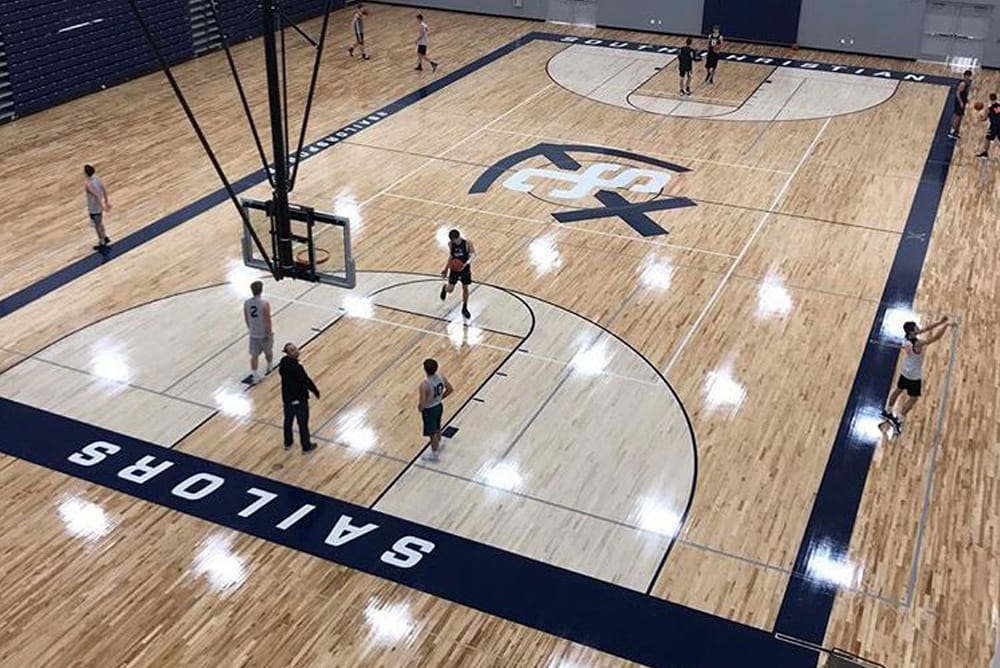
Third Grade Maple Installation at South Christian High School, Grand Rapids, Michigan
Standard Grade (MFMA Second) Maple Sports Flooring
Second grade maple is the middle ground and the most commonly specified flooring. It permits tight knots in the wood as long as they do not occur on the ends or edges of the boards.
It also allows for natural variations such as dark spots and streaks, as long as they don’t appear along with heartwood, which comes from the center of the tree trunk and may be darker due to staining from tannins.
Even though second grade maple allows for some natural defects on the face of the wood, plenty of attention is given to appearance. If you don’t mind having some natural color variation in your court, and have budget considerations for your project, second grade maple is an excellent choice. It is often specified for high school gyms, handball and racquetball courts, as well as many commercial settings.
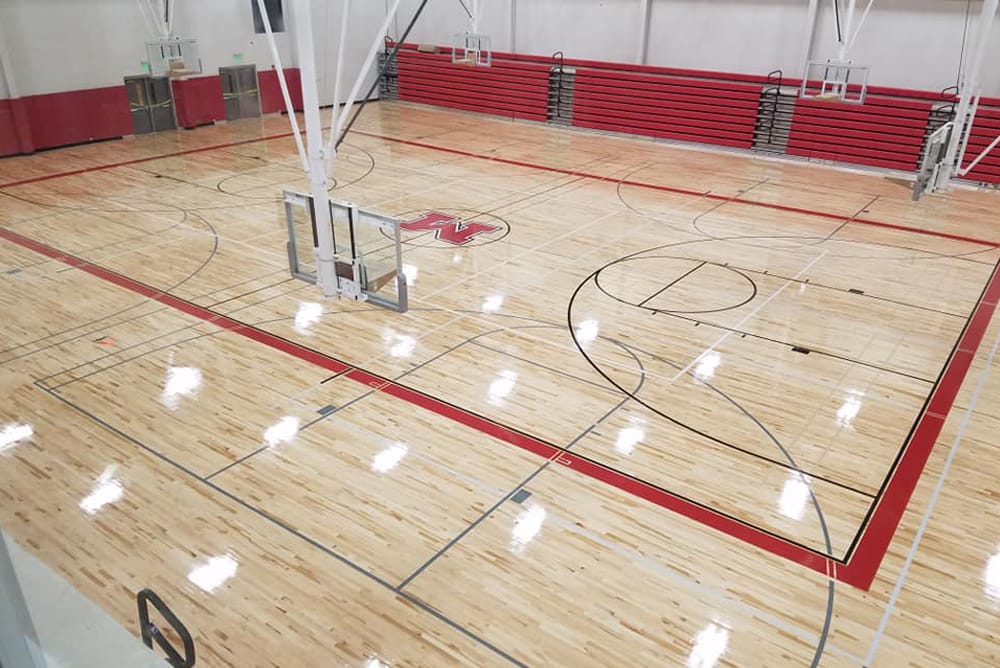
Second Grade Maple Installation at McNair Middle School, Decatur, Georgia
Select Grade (MFMA First) Maple Sports Flooring
First grade maple faces the strictest standards in terms of appearance and quality. The MFMA states that it must be free of defects that would “materially mar the appearance of the finished floor.”
Slight natural variations in color are allowed, and occasional pinhole knots that are smaller than 1/8 of an inch in diameter are permissible as long as they aren’t on the ends or edges of strips. Other than that, there must be no streaking from bark, and there is less leniency for dark spots than what is allowed for second and third grade maple.
The bright floors you see used in many competitive arenas is likely first grade maple. It’s desirable for professional play and televised sports because game lines are easily visible on a lighter-colored court. Many high schools and colleges also choose to install first grade maple in their competitive gyms. However, it does tend to come with a higher price point.
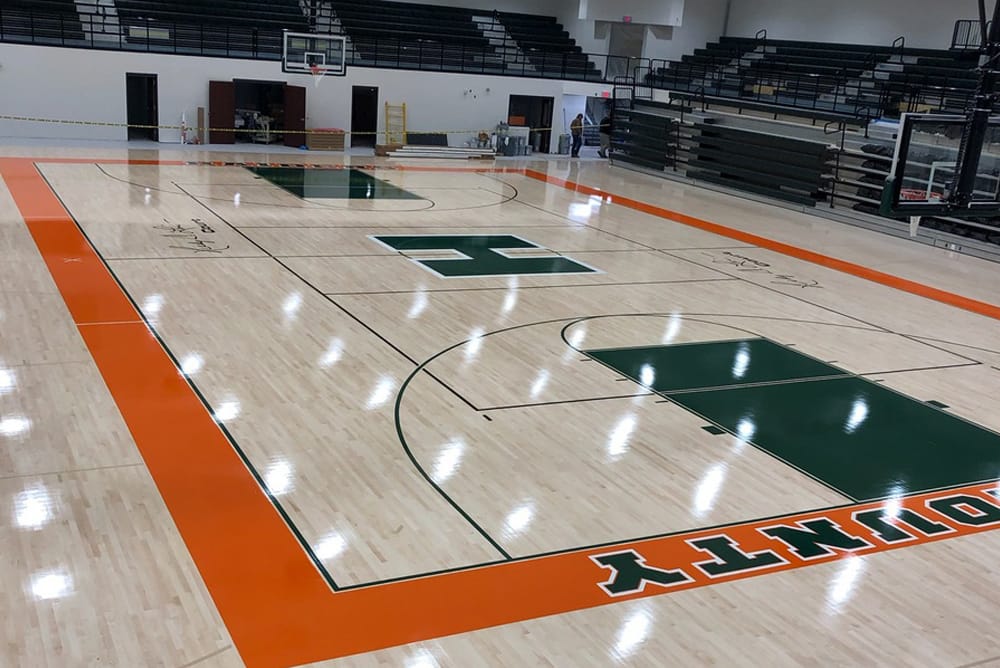
First Grade Maple Installation at Hart County High School, Mundfordville, Kentucky
Why is First Grade Maple a Higher Price?
If first, second, and third grade maple sports flooring all provide the same level of durability, longevity, and performance, you may wonder why there are price differentiations. It comes down to two factors: limited supply and additional labor.
As you might expect, boards that are nearly free of defects are tougher to come by than those with color variations, markings, and knots. It also takes extra work and expertise to identify wood that’s considered first-grade quality.
At Action Floors, we’ve carefully trained more than two dozen people to precisely examine the quality and appearance of each board that runs through our plant. They judge the wood based on the MFMA’s grading guidelines. The grading line is one of the last steps before floorboards are bundled and shipped for installation. That’s because the grade of lumber can change as it goes through the milling process.
Architects and facility owners can be confident they’re getting the grade of maple that was specified because the MFMA regularly conducts inspections at member mills. Find out more about quality assurance efforts at Action Floors.
Why Pick Just One?

A combination of grades used in an installation for Windermere High School, Windemere, Florida
The grade of maple specified for a sports floor project will have a profound impact on design and aesthetics. But, you can also combine grades to create a unique look inside the gym.
For example, some schools choose to use a lighter grade of maple for the main court while third grade maple surrounds the gymnasium’s perimeter, creating a framing effect. Get more design ideas in our article on creative hardwood sports flooring considerations.
To view other examples of beautiful hardwood sports floor installations, don’t miss the Action Floors Photo Gallery, where you’ll find finished projects at arenas, universities, K-12 schools, and more. Contact the team at Action Floors today with questions about your upcoming sports flooring project.


















